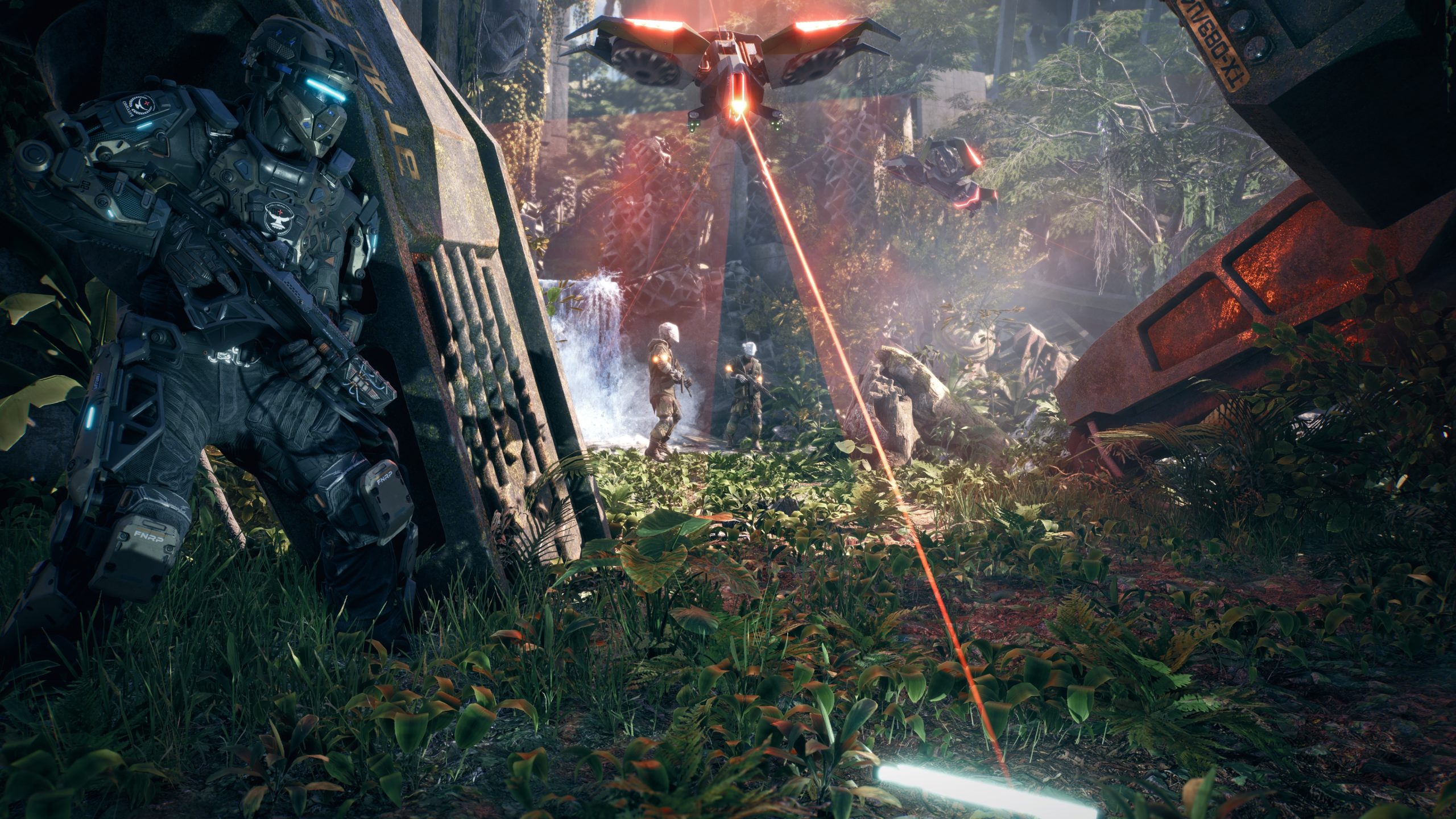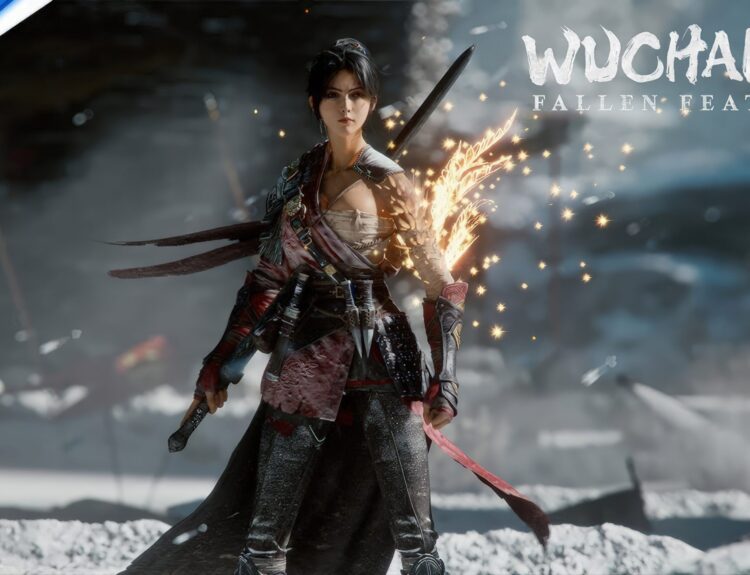In the span of one and a half months, we have switched from the announcement of La Quimera (and rebranding games 4A Ukraine to burn back) to confirmation of the release date, which is scheduled for April 25 on the PC. However, selected players will have the opportunity to try the first person’s new sci-fi shooter game this weekend as part of the closed beta test available through Steam.
Meanwhile, we reach back to discuss their debut project (which is also their first multi -design game), division with game 4A, and more. Continue to read for the answers from the Director of the Oleksandr Kostiuk Project, CEO Dmytro Lymar, and CTO (Chief Technical Officer) Iruii Sashchuk.
https://www.youtube.com/watch?v=jvcu_hdg3iw
How long has La Quimera in development?
Oleksandr Kostiuk: La Quimera has developed since 2020, when we started pre-production with a small team. Around 2021, the project moved to full production, although the team was still growing at that time. Unfortunately, the full scale invasion of Ukraine in early 2022 disrupted our plans and influenced our time line-like many other people, we had to adapt to new reality while keeping the project moved forward.
Press broadcasts say you receive funds for that. Can you reveal the source? Have you ever considered partnering with a publisher?
Dmytro Lymar: The development of the game has been funded through the profits of our previous projects, along with additional minority investments that are kept secret. These funds are collected to support company growth and game development. Although we are truly open to potential partnerships with publishers – both now and in the future – the current state of the industry makes collaboration like that more difficult than usual.
Can you discuss the 4A game division?
Dmytro Lymar: 4A game division occurred in 2014 when there was an early invasion of Ukraine by the Russian Federation and Crimean Appendix. However, we continue to work on the same project, Metro Exodus, as a team. After completing work in 2020, we started our own project, La Quimera, while other parts of the 4A game continued to work in Metro and, around the same time, acquired by the Embracer Group. In addition, because of the confusion of having two companies of the same name now working on different projects, we have to complete this, and we agree that it would be better to maintain the 4A Games trademark with Metro, so our studio gets a new name – reburn.
Why did you choose Latin America as a center location for your sci-fi settings? Do you consult with local experts to ensure proper cultural depiction?
Oleksandr Kostiuk: Latin America makes us fascinated as an atmosphere because of an extraordinary blend of culture and a rich layer of history. Combined with La Quimera’s near future frame, it gives us almost unlimited creative freedom to build a unique and interesting universe.
We have consulted with Latin American experts to get feedback and help analyze our work to ensure respectful and wise representatives. It should also be noted that the world of La Quimera is a vision of the future of cosmopolitan – where historical and cultural roots in this region are mixed with new technology and global influences carried by settlers from all over the world.
Can you tell you more about the settings and background of the story?
Oleksandr Kostiuk: Although we prefer to save some significant plots in the package for now, we can share a little about settings and stories. La Quimera took place in the 200s, in the future which was formed by political instability that had fully drawn national borders, effectively removing global countries. The world now resembles a kind of feudal fragmentation on a global scale, but with 21st century technology. In the Dystopian world, post-industry, private military companies and companies that control the main resources-such as energy and information-holding strength and significant influence.
The game takes place in Nuevo Caracas, a new city country formed where the elements of a mixture of past with future trends. Knowledge of the game is very rich and detailed that it can fill dozens of pages. We are very grateful to our writer, Nick and Ed, for their work in reviving this world. We also plan to launch an online encyclopedia for the world of games, allowing anyone who is interested in diving deeper into settings and learning more.
You say that La Quimera is a game that is driven by the story. I assume this means it will not be semi-open world like Metro Exodus, right? Is there an optional side content in La Quimera?
Oleksandr Kostiuk: Yes, we are very focused on providing a strict experience and driven by a story where the narrative acts as a guide for players through the world of games. As a result, we have chosen a more linear approach to our location design. Which says, players will still be able to find secret areas and optional zones that are not needed for the main story line. The development of additional content for La Quimera is still in the process, and we carefully consider the best way to expand experience while staying loyal to the core narrative.
How long do you expect the game for the average player?
Oleksandr Kostiuk: Considering the challenges we faced during the development of La Quimera due to war in Ukraine, we made a decision to focus on more compact experiences while still entering the most important elements of the game.
The main storyline for Solo players will bring FPS fans experienced about 5 hours to complete it. If you are looking for some additional challenges with your friends playing cooperatively, this must extend your play time for several hours.
This is your first co-op game, right? Can you share the main challenges when making multiple games? Also, how does it work in terms of hosting/joining, and will it play cross?
Oleksandr Kostiuk: Maybe the biggest challenge is to create a game that is driven by a story that is equally interesting whether playing solo or with friends. We want to make sure the experience remains rich and deep in both cases, although there are some nuances that make the two approaches different.
You will be able to play solo and with friends or random players. At the beginning of each level,
You will have an option to choose how you want to play. As for arranged marriages, this is a bit too early to say, because at this time we only release on Steam, but we aim to make multiple design experiences possible on various different platforms.
What is the scale of the game to calculate co-op players when they join a session?
Oleksandr Kostiuk: This game adjusts the intensity and density of the meeting based on the number of players in the session. This includes the number of enemies that can be involved in battle at once, their overall number, laying levels, and damage output, all scales depend on how many players are there.
In addition, we have developed a system where each player can choose the level of their personal difficulties in the co-op session. This difficulty will apply specifically for players who choose it, but will still be balanced with the difficulty of other players to maintain a fair and pleasant experience for everyone.
What are your post-launch plans for La Quimera?
Oleksandr Kostiuk: We have many plans and ideas to expand the storyline and elements of gameplay in the La Quimera world. Feedback and the impression of players are also very important for us when we move forward. At this stage, our post-launch plan is still in work, but we will be eager to share it with the community as soon as they are ready.
Are you still using a 4A machine or something else? Will the game support NVIDIA DLSS 4 and AMD FSR 4? How about Ray’s search?
IURII SASHCHUK: For La Quimera, we use Unreal Engine 4, which allows us to make multiple design games more easily, have all the technologies and tools needed. However, our experience with the 4A engine remains a vital foundation-changing our approach to rendering, performance optimization, multi-threading, streaming, determining visibility, memory management, task scheduling, and content optimization.
Compared to Metro Exodus, we have introduced some main improvements. In particular, we overhaul the streaming texture to enable greater variations and better performance. Details of the scene in La Quimera are significantly higher, which requires us to develop a new visibility system. This allows us to handle more objects in scenes without reducing performance. We also made an increase for Unreal’s shadow mapping cache, allowing us to support more dynamic lamps simultaneously. Overall, our goal is to give as many artists and designers as possible creative freedom while maintaining strong technical performance.
We apply special solutions to global lighting (indirect) instead of searching Ray Real-time.
This gives us better performance, wider compatibility of hardware, and more efficient data storage, while maintaining a strong visual level. We use DLS and FSR. They are interesting technology with frequent improvements. But we have not applied the latest version, which we plan to be applied in the near future.
What do you think about the latest release from Pratinuki Directx Raytracing 1.2 with the support of nerve rendering? Are you sure you will take a long time to be applied in the game?
IURII SASHCHUK: We are really excited about the potential of Raytracing 1.2 Directx and nerve rendering. While La Quimera currently does not use Ray Real-time search because of our priority to achieve strong performance on various hardware, we do use raytracing during the process of making assets to improve visual quality.
We really see the great potential in searching ray and other neurological network -based technology. This is still relatively the beginning in their development, but we believe they will continue to grow and eventually become more adopted in the production environment. As for how fast this happens – it really depends on specific features, hardware adoption, and implementation complexity. We follow this development carefully and certainly plan to integrate more of this technology into our work in the future when they are mature.
Will La Quimera support PlayStation 5 Pro if the game makes it a console?
IURII SASHCHUK: We have not announced plans for a console, so it’s hard to tell something specific. But we always try to squeeze as much as possible from any hardware, Playstation 5 Pro should not be an exception.


Thank you for your time.
Gaming Hub
Game online adalah jenis permainan video yang dimainkan melalui jaringan internet. Game ini memungkinkan pemain untuk berinteraksi dengan pemain lain secara real-time, baik itu dalam bentuk kerja sama, kompetisi, atau eksplorasi dunia virtual bersama-sama.



